
This statement was my contribution to the Public Seminar ‘Understanding and communicating risks post-Fukushima’ at the United Nations University in Tokyo on Friday 13 November 2015.

the journal of the Institute of Idle Curiosity for Elements of Seduction
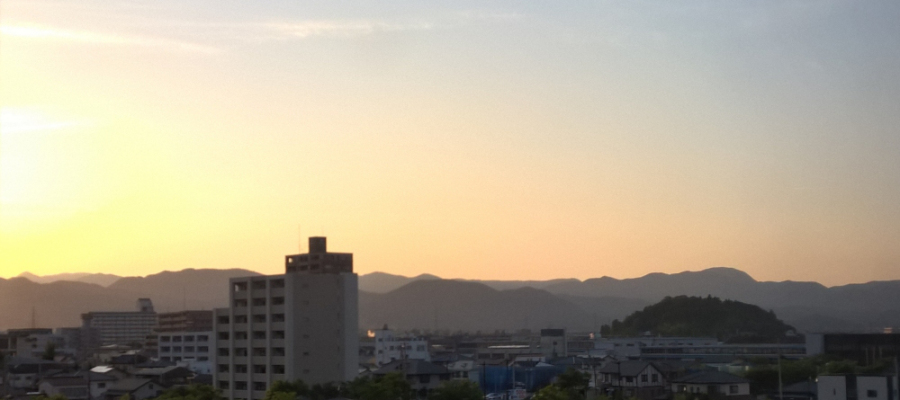
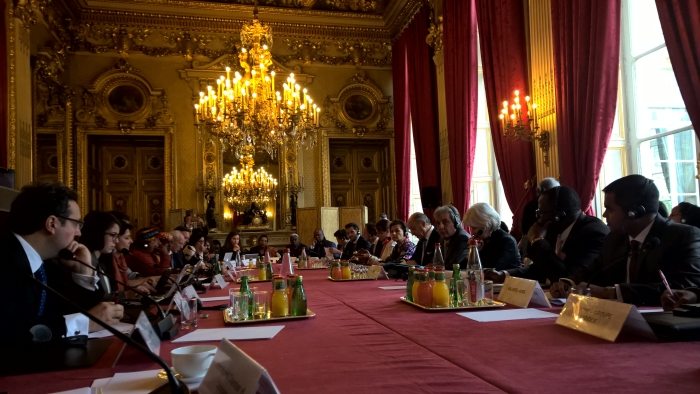
On Sunday 8 November 2015, I delivered a statement on behalf of the Research and Independent Non-governmental Organisations to the United Nations Framework Convention on Climate Change (UNFCCC). The statement is a joint piece of work done by the RINGO steering committee. The meeting was organised by the French COP21 hosts and was attended by 17 representatives from observer organisations, 14 Ministers, 4 Ambassadors or Head Negotiators and the UNFCCC Secretary General Christiana Figueres.
Read the full statement and find more background information here.
Part of the never ending PhɅAct Collective tour.

Lecture given at the 2015 Global conference of the International Commission on Radiological Protection.
Abstract
Due to the specific character of the radiological risk, judgements on whether or not the use of nuclear technology would be justified in society have to take into account knowledge-related uncertainties and value pluralism. The justice of justification thus not only informs the right of the potentially affected to participate in decision making, it also implies the responsibility of concerned actors to give account of the way they rationalise their interests and beliefs in knowledge generation and decision making. From this perspective, the presentation argues that there is a need for a ‘performative’ understanding of ethics in order to give ethical values or virtues a practical meaning in a socio-political context. Consequently, it proposes the concepts of ‘reflexivity as an ethical experience’ and ‘intellectual solidarity as an ethical commitment’ and elaborates on the way they could inform the methods of justification and optimisation and the ratio of dose limitation in radiological risk governance.
For more information on the conference, visit http://www.icrp2015.com/
Part of The PhɅAct Collective Tour. Write us if you want to have more information on this lecture.
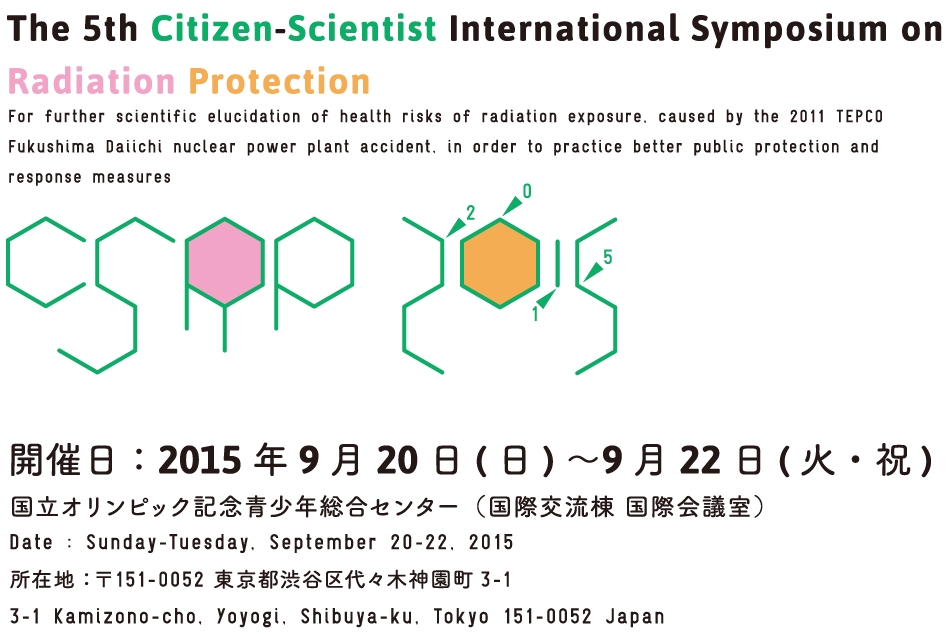
From 18 to 22 September 2015, I did three lectures in Tokyo on the occasion of the 2015 Citizen-Scientist International Symposium on Radiation Protection:
“Dealing with low dose radiological risk: The challenge of striving for democratic justice and societal trust and peace in the absence of scientific evidence” at the Study Group on Radiation Health Effects After the Nuclear Accident, Sophia University, Tokyo, 18 September 2015;
“The Consolatory Practice of Leaving – On reflexivity as art activism in the age of populism, positivism and profitism”at the ‘Between Arts and Science’ session of the 2015 Citizen-Scientist International Symposium on Radiation Protection, Tokyo, 20 September 2015;
“The Right to be Responsible – Ethical reflections on risk assessment in post-nuclear accident situations” at the Ethics session of the 2015 Citizen-Scientist International Symposium on Radiation Protection, Tokyo, 22 September 2015.
The CSRP2015 organisers took a quote from our film ‘A Journey into the Land of the Fourth Dimension’ as motto for their ‘Between Arts and Science Session’:
今日、科学は、過去に類を見ない規模で、政治と経済の場における権力の戦略としての役目を果たしている。遺伝子操作が施された種をめぐる政策、高性能ド ローンによるテロ計画、砂糖や脂肪への依存を促す生化学的メカニズム、ハードウェアやソフトウェアに助長される金融投機およびゲーム理論による政治的・経 済的施策の支援は、その中でもほんの一握りの例に過ぎない。幸いにも、実のならない種、砂糖、脂肪、脂質、ドローンや金融投機は公共圏で具現化されるため に、社会的な批判に晒されることになるが、人間の行動および社会動態が政治や市場の恩恵を受けて数学モデル化されている事実は、いわば科学のおとり作戦と でも呼ぶべきかもしれない。このようなゲーム理論作戦は、完全に無益というわけではなく、それ自体が人類に直接的な害を与えはしないかもしれない。しか し、われわれが誰であり、何を信じ、何に希望を抱き、何を恐れるのかということが、このような作戦により感情から切り離され、時として皮肉に合理化されて いる状態というのは、重要人物グループ(権力者グループ?)が今日持つ世界観の痛ましさの一例かもしれない。完全な社会的組織化に合理的に取り組もうとす る妄執と対立するのは、複雑性とは単に、人々が自らその複雑性を理解しようとする権利を与えられるという意味合いがあるという洞察である。その洞察を護る ためにわれわれが必要としているのは、モデルでも公式でも数字でもなく、あの「4次元世界」により啓蒙される果敢さを携えた科学と経済と政治のみなのであ る。
※映画『A Journey into the Land of the Fourth Dimension』(コンセプト・監督:ガストン・メスケンス)メスケンス自身による背景説明より抜粋
Find more information on that session here
Background.
The Citizen-Scientist International Symposium on Radiation Protection (CSRP) is an initiative that was set up by an NGO network after the Fukushima nuclear accident. The initiative, now certificated as a non-profit organization, is (quote) “[…] politically, financially, ideologically and religiously independent […]” and “[…] created by concerned, free-thinking citizens who have been committed to keeping radiation damages on health and environment to minimum […].”
The CSRP recognises that judging on the necessary protection measures is complicated by the fact that ‘health effects of low-dose radiation exposure are not yet well understood’ but also claims that the people’s concerns and fears are above all triggered by their ‘mistrust in the information and radiation protection measures provided by the Japanese government’. As a reaction to that, CSRP wants to organise the public dialogue the authorities ‘fail to organse’: “[…] The purpose of CSRP is to gather the latest scientific findings from the world on health effects of ionizing radiation and share them with citizens. Furthermore, CSRP aims to provide citizen-scientists from within and outside of Japan with a table for discussion on health effects of ionizing radiation and on protective measures, contributing at the same time to the establishment of an extensive international network for citizens’ radiation protection. […]” (http://csrp.jp/about_us)
CSRP2015 was the fifth conference in a row. Day 1 focused on ‘diverse intellectual interactions between science and art’, day 2 explored ‘epidemiology as a science’ and provided ‘a general overview of radiation protection measures based on the latest biological findings’. Finally, day 3 dealt with societal aspects with the aim to discuss ‘what language, law and ethics are necessary in order to put such measures into practice’.

Invited lecture “The Right to be Responsible – Ethical reflections on risk assessment in post-nuclear accident situations.”, done at
The Second Asian Workshop on the Ethical Dimensions of the System of Radiological Protection is part of a series of workshops organised by the International Commission on Radiological Protection in cooperation with local hosts. This workshop was hosted by the Fukushima Medical University and focused on the theme of ‘Nuclear Emergencies and Post-Accident Situations’. See more info on the ICRP ethics initiative here.
On the occasion of my presence in Japan, Prof. Kinhide Mushakoji (retired Vice-Rector of the regional and Global Studies Division of the United Nations University and currently Vice President of the International Movement Against All Forms of Discrimination and Racism) arranged two additional lectures for me in Nagoya and Tokyo.
Part of the The PhɅAct Collective tour. Write us if you would want to have more information on these lectures.

… “In a world paralysed by the comforts of polarisation, stereotype and pseudo-tolerance, the Institute of Idle Curiosity for Elements of Seduction researches that critical human condition that would allow an untainted intellectual solidarity and a consolatory decadent aesthetics of life.”…
Thursday the 9th of April (7pm till midnight) – Opening seminar starts at 8pm
09.04.2015 – 19.04.2015 / Friday to Sunday / 2pm – 7pm + by appointment
THESE THINGS TAKE TIME – Nederkouter 36, 9000 Ghent – www.thesethingstaketime.be – +32 474 75 82 74
Download the flyer > here <
Thursday the 16th of April (6pm till end)
Programme:
6:45pm – Intro
7:00pm – Film screening ‘A Journey into the Land of the 4th Dimension’
8:00pm – Salon ‘An evening with Paul Otlet and Gaston de Pawlowski’
Melancholy is not depression neither pessimism. Drawing on interpretations from the pre-modern Romantic and Decadent Era, it can be described as the aesthetical consolation that comes with the awareness of the impossibility of pure beauty, unity and harmony, and of the inevitability of imperfection, decadence and uncertainty. The idea however is that melancholy is not a detached but an ethical experience, and that this became apparent with modernity: melancholy is the human condition resulting from a deliberate awareness of the limits to rational instrumental reason in a context of social appeal. That social appeal may either be love, friendship or lust, or social or political engagement. The implications of modernity rendered melancholy with a social meaning: the impossibility of pure beauty, unity and harmony, and of the inevitability of imperfection, decadence and uncertainty, is not experienced by way of detached observation, but in a reflexive way in social interaction.
In this vision, the ‘end state’ of melancholy is still aesthetical consolation. But that state is not passive, as it arises from an ethical demand. In its recognition of the intrinsic ambiguity of human interaction and of the inherent complexity of social organisation and cohabitation, it is an intellectual withdrawal from the delusion of grandeur of a society obsessed with rationality, security, efficiency, predictability and competition. In its disdain for complacency, it is a consolatory practice of leaving the comfort zones constructed around strategies of conformism, positivism, populism and profitism. But as an active state of resignation, melancholy is not evasive. Its decadence is in the eyes of the conformists. Layered on reflexivity as an ethical experience, it feels the anger towards the detached. And as a meta-state of concern, it is aware of the fragile potential of intellectual solidarity among the capable, and of the melancholy of the capable as vulnerable.
Melancholy is practicing the aesthetics of imperfection, decadence and uncertainty, although with a constant awareness of – and care for – the possible of human possibilities.
[…]
Confronted today with its adverse consequences, modernity is traditionally characterised as the era of a growing obsession with rationality, security, efficiency, predictability and competition. That picture is incomplete, as it overlooks the early signs of ‘reflexivity as an ethical experience’ of socially-critical individuals and groups, and of the state of melancholy in which they operated. Understanding modernity is understanding the melancholy of resistance against modernity in modernity.
Text: Gaston Meskens
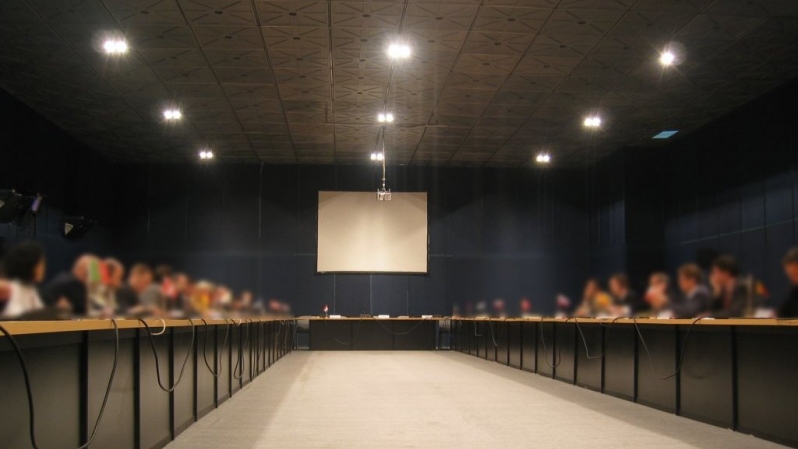
The philosophical activism tour of the PhɅAct Collective: new interventions scheduled for 2015 (more to come):
Madrid, 4 – 6 February 2015, Technical University of Madrid
Invited lecture at the Second European Workshop on the Ethical Dimensions of the Radiological Protection System
Dublin, 25 February 2015, Trinity College
Invited lecture at the Workshop ‘Lightening the Dark Side of Science’
Sofia, 24 March 2015, Center for the Study of Democracy
Preparatory meeting for the workshop ‘The Science, Politics and Ethics of Nuclear Technology Assessment’
Bucharest, 26 March 2015, University of Bucharest, Faculty of Philosophy
Organisation of the workshop ‘The Science, Politics and Ethics of Nuclear Technology Assessment’
Sofia, 21 April 2015, Center for the Study of Democracy
Organisation of the workshop ‘The Science, Politics and Ethics of Nuclear Technology Assessment’
Stockholm, 25 27 May 2015, SENIX Conference
Invited lecture ‘Beyond Controversy and Diplomacy – An Ethical Perspective on Energy Governance’
Delft, 1 – 2 June 2015, University of Delft
Lecture ‘Nuclear Energy in its socio-political context’
New York, 25 – 27 September 2015, United Nations Headquarters
United Nations Summit to adopt the post-2015 development agenda
Seoul, October 2015
Invited lecture on ethics at the 2015 World Conference of the International Commission on Radiological Protection
Paris, 30 November – 11 December 2015, UNFCCC conference
Representing the Constituency of Research Oriented and Independent Non-governmental Organisations to the UNFCCC at the 21th United Nations climate change conference (21th session of the Conference of the Parties and the 11th session of the Conference of the Parties serving as the meet ing of the Parties to the Kyoto Protocol).
[…]
For an updated list, check http://www.thephactcollective.org/thephactcollective_tour.htm.
We were invited to do the keynote speech on the occasion of the opening of the Residency 2015 at the Rijksakademie Amsterdam.
The Consolatory Practice of Leaving – On reflexivity as art activism ‘in the age of populism, positivism and profitism’
See the notes of the speech here: Gaston_Meskens_Rijksakademie_Opening Residency 2015
[…] The artist knows no comfort zones. Art is engaging in the consolatory practice of leaving the own comfort zone. Activist art can show politics, the market, science, religion, citizens and activists why and how they would need to leave their own comfort zones. That practice is critical-ethical, but, at the same time, consolatory aesthetical. […]
More of the Rijksakademie at http://www.rijksakademie.nl/home
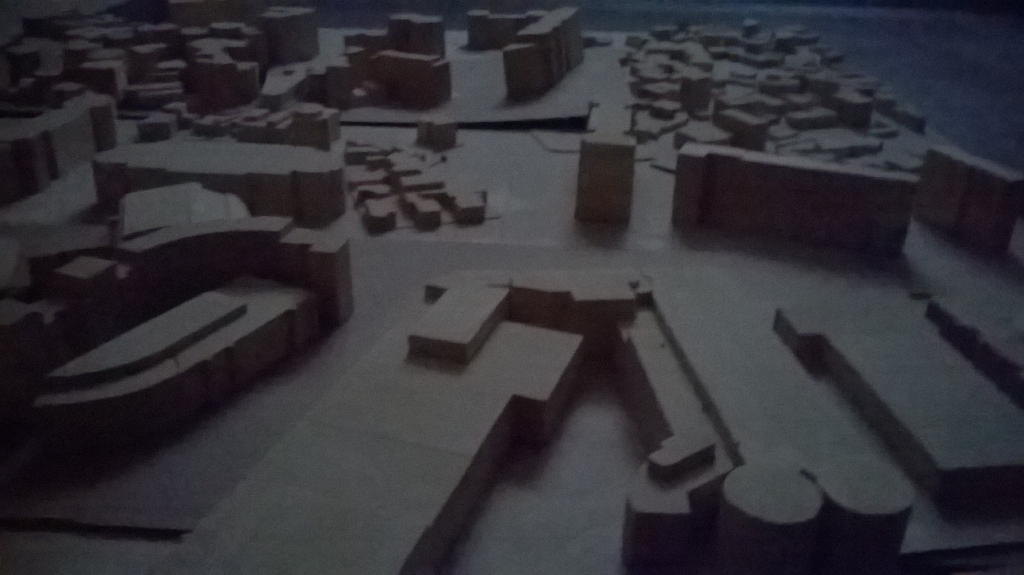
The film The Archive of Opportunities was created on the occasion of the art show The Archive of Opportunities on view at The AnteRoom in Antwerp in January 2015.
The archive of opportunities
A film by TRAGIC REALIST FICTION
Voices
Sarah de Graeve
Davinder Valeri (from Toronto)
Shamina de Gonzaga (from New York)
Marko Kovac (from Ljubljana)
Alejandro Margetic (from Buenos Aires)
sound, music
Gaston Meskens, Sarah de Graeve
concept, video source material, direction, editing, montage
Gaston Meskens
https://vimeo.com/137293518
Conversations
Sarah
So here we are.
Rows and rows of silent trees.
Blinded by the stream of consciousness,
that stream gives us almost nothing to see.
Bewildered, it should be the proof of everything in me
that was pulled out that night; the wind wiped away the rain, ultimately.
No rain, there was no rain; nature did not exist, at least not formally.
However, invisible me, for you, the shifted blooded sea:
suspected to be essentially flawed ?
merely… see.
[…]
Davinder
When I entered the archive for the first time, I was surprised at the sheer simplicity of the classification system. The plan was clear and well-organised. There were no deviant routes, no blind alleys, no confusing crossroads. The numbering of corridors, cabinets and shelves followed a rigid logic and was kept up to date. There were no gaps or jumps, no sudden interruptions. The sense of predictability softened the sinister atmosphere of the immense space. The logic was reassuring and forthcoming. The logic was good.
Shamina
The remarkable thing, I also remember, was that the cabinets in the halls were all empty. Modern in style but empty, as if they had just been installed, waiting to be filled with content. But the striking thing was that the date labels of the shelves, cabinets and rooms didn’t go back in time but started counting towards the future. They were not meant to contain historical material, but artefacts that still needed to be created and documented.
Marko
And what was really strange, and in a way scary, was the fact that the first date label of the first shelf of the first cabinet in the first room always had the actual date of your visit to the archive, and that the labels always counted up from that date towards the future, for years and years and ages and ages. Nobody could ever find out where the counting stopped. The space was too big. So although that situation was quiet creepy, it was logic that the shelves remained empty, as their date labels always started counting from the date we entered. That archive could not contain artefacts, as there was never a past to be documented.
Alejandro
It was only after years of exploration that we realised that the archive of the past was somewhere else. The thing was that you had to turn left immediately after entering the first room. There was a stair going down, and nobody ever thought of descending it. It is almost unbelievable that nobody had the intuition to go down to check what was there. I guess we were all too confused about the strange thing with the labels and the empty shelves.
Shamina
It was the doorkeeper who told us that we should go down. For years, he didn’t say a word, but then, one day, he stood up and came out of his office towards us. He said that it was time, that it was finally time to go down. We did not understand what he meant with that. We looked at each other, confused, and I remember he smiled. He returned to his office, and instead of waiting for further clarification, we descended the stairs. What we saw, after our eyes had adapted to the darkness, looked like the setting of a classical archive. Again the corridors, rooms and cabinets, and again in seemingly endless rows.
Marko
We started to walk, trying to find our way through the archive. The light was scarce and the whole place looked totally crammed with cabinets, documents and objects. Although it seemed as if there was nobody else present, we heard footsteps and conversations from time to time. Those sounds were immersed in a bed of soft dark noise, as if air was continuously breezing through the corridors, rooms and halls. The smell was mouldy and damp, although with a crispy overtone of a strange smoky perfume, the same you would experience around a campfire outside, in the woods.
Alejandro
The first rooms we entered were cramped but rather empty. They had prints and diagrams stuck to the walls and on a table in the middle of the space. We could not figure out what they represented. We saw images of a building, and group photos of people. The building could have been the archive itself, but we were uncertain. It looked different from what we were used to see from the outside. But in some way, the displays suggested it was the archive. The group photos seemed to have been taken not so long ago. We didn’t recognise anyone of the people, but they must have been colleagues, as we recognised the places where the photos were taken.
Marko
After crossing the first smaller rooms, we entered big halls that were connected through corridors at all sides. The ceiling of the halls must have been very high, as we could not see it in the dark. We were totally amazed by what we discovered. There were several halls with documents on shelves. Most were arranged in box files, but some of them were unfolded and displayed, so that you could read the text and see the images. We randomly took out a document here and there to see what it was about.
Davinder
After a few hours of studying and reading, we understood we were in the middle of a countless collection of ideas, reflections and critiques that once must have been put aside without proper consideration. There were thousands of fragments of conversations still to be set up, and a myriad of suggestions of gatherings that never had taken place. It was all there, waiting to be said and done, and the strange thing was that, just by trying to grasp their meaning and focus, we felt that they were all new.
Shamina
On the higher shelves, there was an extended systematic classification of – what I can only describe as – various ‘manifestations’ of awe, confusion, wonderment, hope and fear, all in their turn documented with both mystical and rational arguments. We tried to understand them, but it was difficult, as it felt as we had never experienced them. The references contained dates, most of them from the middle of last century, and sometimes there were photos of people, always somewhere in a laboratory. There was no explanation of who was in the photo, or reference to where it was taken. The people in the photos were very ‘present’. They looked committed to what they were doing, but not arrogant.
Marko
Other halls had rows and rows of objects displayed. There were strange artefacts that must have had a function in some context, and we found out that many of them were accompanied with comments on their origin and possible use. Other things were unrecognizable and had no explanation. They could have been art objects, but we were not sure. We entered halls with cabinets that only contained printed pictures in every possible form and depicting all imaginable subjects and scenes.
Alejandro
Drawers contained printed schemes and diagrams explaining logics and systems, some of them recognisable, but most not, as extra information on their origin and use was missing. There were also several halls with rows of tables, presenting scale models of technological and architectural structures, and there were numerous replicas of cities and strange urban settlements. We had the feeling we could recognise a few, but most looked as designs still to be build.
Davinder
At some point, at a crossing of three large and long corridors, there was a big display cabine t with two people in it. It was a woman and a man. They were standing back to back and they were naked. We approached the cabinet with a very uneasy feeling. They seemed to be real and alive, but then this would have been very strange, because the cabinet looked very old, and impossible to open. When we stood close, we had the impression it were life-size wax dolls, but their gaze was penetrating, as if they really saw us. What was really weird was that, while we were standing there close, we were not scared anymore. We saw them, and they saw us. There was a feeling of recognition, but no urge to do something with it. We continued our way.
Alejandro
Who invented, suggested, constructed and formulated all this? Who collected, classified and preserved al these records and, above all, with which aim? It must have been a work of ages, even millennia. The documents and artefacts were physically there, they must have been created in the past. But they had no label indicating the date of their classification. We had the impression they were classified according to themes and subthemes. But it was impossible to understand the classification system by studying the labels, as they only contained letters and numbers and no catchwords. The system seemed at least meaningful but ultimately sophisticated.
Shamina
I don’t remember anymore how long we spent down in the archive during our first visit. One moment, we found ourselves standing upstairs in the first, empty archive again. The doorkeeper was gone, and the place was dark. We checked the date of the first shelf of the first cabinet in the first room and concluded that we had been down for weeks. There must have been water and food, and we must have slept down there, but all memories of this sort were gone.
Davinder
Afterwards, in one of the many attempts to make sense of our experience, we had this commonsensical thought that it is unwise to study history with the aim to extract theories for the future, but also that we all felt that this was different. What was kept down there was not history. It was a peculiar consolidation of opportunities, bizarre in its forms and setting and ultimately intriguing. The question of who had ever collected and classified it didn’t matter anymore. It was there.
[…]
Marko
So here we are…
Shamina
The simple idea is that the pursuit of peace and well-being is not a matter of finding compromise over incommensurable or conflicting interests, as our essential interests as humans are not necessarily incommensurable or in conflict ‘by definition’. Our society is inherently complex but not inherently antagonistic. The idea that we have to live with the fact that there exist fundamentally opposing worldviews and conceptions of life is strategically maintained by religious and political oppressors. Only then can they construct their presumed rational theory of the ‘collective identity’ and decide who belongs and who does not. Their populist oracles appeal to the conformists of the citizenry who can only make sense of the complexity of life by way of ascribing guilt to an enemy. Collective extremism is not rooted in deviance but in conformism. Collective extremism roots in extreme conformism…
Davinder
Every time again, it will turn out that this one night, that one walk, this one conversation, that one morning, … was not a new reference for a deeper and more authentic life, but simply a meaningful event to never forget. And then you are somewhere, alone or in company, and suddenly you feel connected to some other place, to some moment in the past and to some time in the future, all at the same instant. You experience a time lapse of connection with an undefined set of possibilities. You cannot name this other place and these other moments, but you know you know them, either as a potentiality or as a memory. You know that you might have been to that other place already, and that the moment in the past feels as if it still needs to happen. And you feel already that consolatory kind of melancholy, remembering that time that still needs to come.
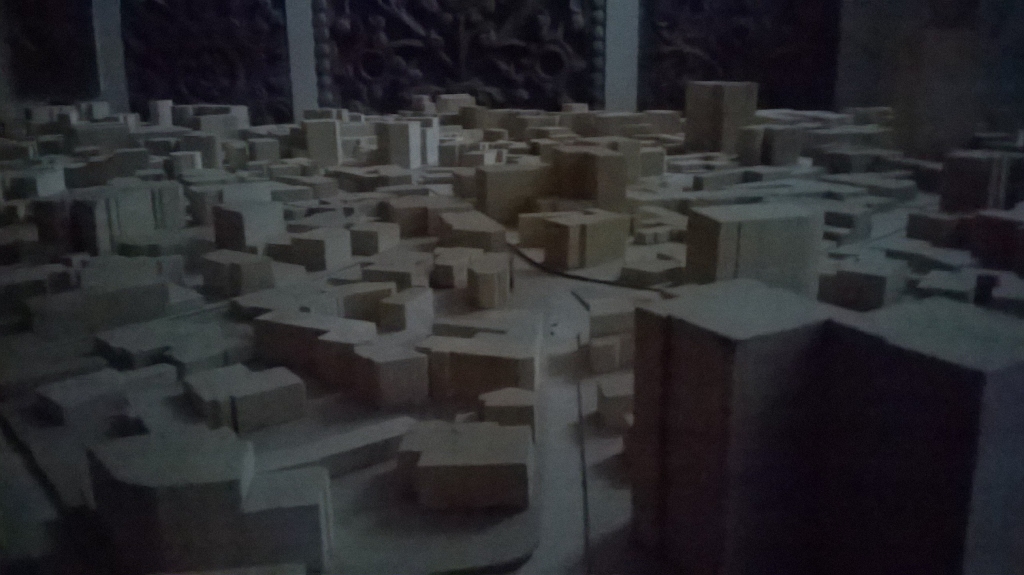
Under the title ‘The Archive of Opportunities’, the Institute of Idle Curiosity for Elements of Seduction presents two events (on two locations) organised by The PhɅAct Collective. The PhɅAct Collective is the philosophical activism collective of the Institute. The collective conducts research on suspicious use of poetical concepts in political context. See their website at www.thephactcollective.org.
Openings
The show at The Office of Resistance, Mechelsesteenweg 28, 2018 Antwerp, opens on Saturday 10 January 2015, 14h00 – 22h00.
The show at The AnteRoom, Kattenberg 93, Borgerhout opens on Friday 30 January 2015, 14h00 – 22h00 (as part of the Antwerp Art Weekend programme – see the official website of that event here).
Detailed programme
For the detailed programme at the two locations, download the flyer in pdf or click the programme image below to enlarge.
Special announcements
(1) World Conference
As part of the programme, join us for
the 1st World Conference on THE VALUE OF MELANCHOLY IN TIMES OF CHEAP COMMITMENT
venue & date:
The Office of Resistance, Mechelsesteenweg 28, 2018 Antwerp / date: Saturday 17 January 2015 14h00 – 18h00.
The programme of the conference will be added here later. If you plan to come, please confirm your attendance.
(2) New Year Reception
You are also welcome to join us for the New Year Reception offered by The PhɅAct Collective.
venue & date:
The Office of Resistance, Mechelsesteenweg 28, 2018 Antwerp / date: Saturday 17 January 2015 20h00 – late.

image from ‘The Archive of Opportunities’ (click to enlarge)

image from ‘The Archive of Opportunities’ (click to enlarge)